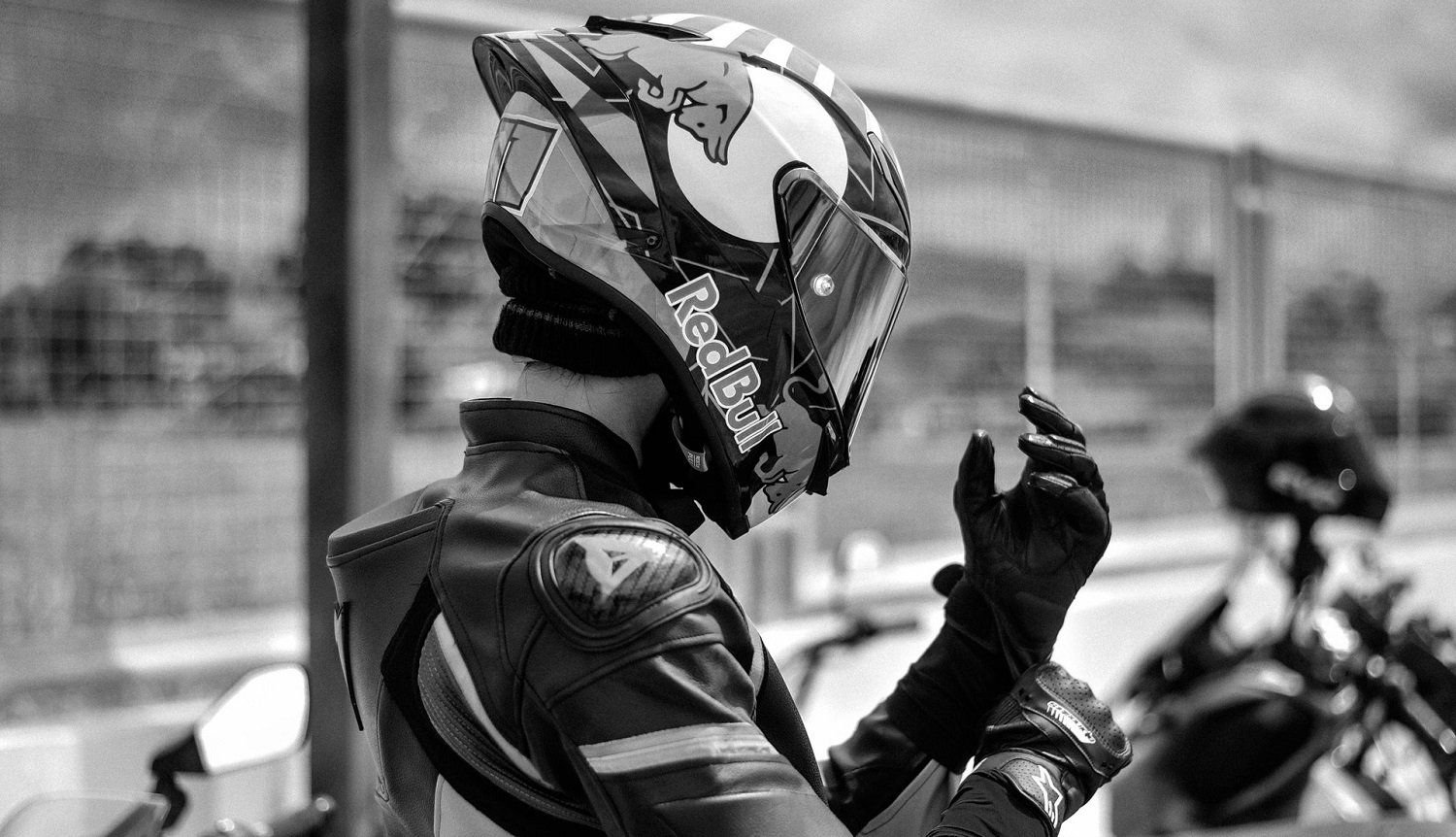How To Waterproof Leather Motorcycle Gloves
Updated on | By Mohit Chauhan

Reader Disclosure
Our editorial content is reader-supported. If you click on some of our links, we may earn a small commission. Learn more here.Leather gloves have always been popular, despite the strong competition from textile gloves. And their popularity is not solely due to their aesthetics, but because they act like a second skin, which is in fact the primary requirement of any good motorcycle glove.
Moreover, these leather gloves provide much-needed balance between warmth, freedom of movement and protection. And most importantly, they can be utilized as a three-season wear.
But what if we told you that these gloves can also be used during occasional downpours? Yes, we are not kidding!
So, whilst you can find a huge selection of waterproof gloves well worth spending a few hundred dollars on, the good news is that you can also waterproof the leather gloves you already own by following a few simple steps.
In today’s post, we will showcase and explain in detail how you can do so without spending a lot of money. So, let’s jump straight to the point.
Steps to waterproof leather motorcycle gloves using dedicated products
In this section we will focus on waterproofing leather motorcycle gloves using dedicated products. And while there are many different types of solutions available in the market, we will discuss one of the most popular one.
Using Nikwax, you can prevent water from penetrating inside the leather gloves. This waterproofing spray (also available in wax form) penetrates the leather and seals out moisture while maintaining breathability. In fact, this is a long-term treatment for leather gloves that helps prevent cracking or splitting.
In addition, you will need two pieces of clean towel, some tissues, a pair of surgical gloves and a face mask to avoid inhaling harmful fumes.
Below are some simple step-by-step instructions on waterproofing your leather gloves. Read through the procedure and work around your gloves as instructed.
Stage 1: Analyzing the leather gloves
Now, before you even buy the waterproofing compound to protect your gloves, you have to know exactly what you are going to be working on. For example, gloves made from suede leather have to be treated differently than the ones made from pure leather. In case of suede, you need to strictly refrain yourself from using any kind of thick wax as you might end up clogging the pores and make them less breathable. So, these should only be coated with waterproofing sprays. However, this is not the case with genuine leather motorcycle gloves, as they can be treated with both sprays as well as wax quite easily.
Stage 2: Cleaning the gloves
Now the second step is to clean them before applying any waterproofing agent. In case your leather gloves are not really soiled, just rub them with a soft cloth or a damp sponge. Alternatively, refer to the washing/cleaning instructions that are usually attached on the inside of the gloves. Also, in order to keep their natural shape, wear them while they are still wet.
In case of heavily soiled leather gloves, prepare an equal solution of mild soap + lukewarm water and use a soft cloth to remove the dirt from the surface. Alternatively, rub a neutral or a mild soap on a damp cloth and wipe it gently over the surface of the glove. Post which, clean the gloves again with a fresh tissue.
Read more about this in detail: How to clean motorcycle gloves
Stage 3: Drying the gloves
Now allow the gloves to dry for at least 48 hours before moving on to the next step. Remember this process takes time and by no means you can speed up the process, except storing them in a well-ventilated room or under a ceiling fan.
Do not dry the gloves in direct sunlight (or by using a hair dryer). This will cause the leather to peel off from the gloves and you will end up ruining them completely.
Stage 4: Testing the waterproofing chemical on leather gloves
Some leather materials react differently to chemicals. So, before you apply any waterproofing compound to your entire glove, it is best to perform a test on a small portion of the glove. To do this, choose a place on the bottom of your glove and apply a small portion of waterproofing solution over it. Ideally, you should let it sit overnight so that you can get an exact understanding of how it treats your leather.
After the waterproofing agent has been allowed to completely dry out, check if this is the result you want, and then move on to the next step.
Stage 5: Waterproofing the gloves
Squeeze out the waterproofing wax on a sponge and start applying onto the leather surface. Take a small quantity at first, and do use this wax sparingly as we do not want to clog the pores of leather.
Gently rub the wax onto the leather, keeping the seams in mind.
Now, allow the waterproofed leather glove to rest for few minutes and then remove any excess wax with a clean towel.
Then let the waterproofed gloves to air-dry completely at room temperature. Ideally, you should leave the gloves to rest overnight so that the waterproofing agent is naturally absorbed by the gloves.
Note: If you are using a waterproofing spray, remember not to sprinkle the liquid more than twice on the same area. Besides, we recommend a distance of no less than 15 cm between the surface and the nozzle.
Stage 6: Examining the results
Once you notice that the gloves have completely dried, gently wipe down the entire surface of your gloves using a soft tissue to check if there is any waxy residue left. By doing this, you will also enhance the gloss making your gloves look like brand new.
Finally, use a water spray bottle to splash some water on your gloves and test the results. If you are satisfied, feel free to test the gloves out in the real world. If not, you may need to repeat the process again.
Waterproofing leather gloves using household products
You do not necessarily have to buy a dedicated product every now and then. Being motorcyclist ourselves, we know that buying motorcycle gear alone can be a costly affair, which is why in some cases (like this one) we prefer household products.
Moreover, these specialized waterproofing agents usually contain chemicals that are quite toxic. Aerosols, hydrocarbons, paraffins, and nanoparticles to name a few. All of these chemicals are just as harmful to your health as they are to the environment.
This is why, as a bonus for our dear readers, we decided to share an economical as well as ecological solution, which also allows you to save a couple of dollars. Keep on reading further to know how.
- By using Beeswax, you can increase the life of your leather gloves as well as make them completely waterproof without using any chemicals. Plus, the process is really straightforward.
- All you have to do is add 4 tablespoons of beeswax in a saucepan and 1 teaspoon of either coconut or olive oil together.
- Now heat the composition on a medium flame / or in a microwave until the wax has completely melted.
- Remove the pan from heat source once the wax has become smooth and uniform.
- Using a soft paint brush, coat your gloves with this mixture.
- You may notice some traces of wax as the mixture cools. These traces will evaporate after couple of hours.
- Now ensure that the leather surface of your glove is well coated with the solution by rubbing the mixture evenly onto it.
- Blow dry the gloves using moderate heat until you notice a shiny finish on the surface.
- Now keep the gloves aside for a couple of hours.
- After few hours remove any excess wax using a soft tissue and let the gloves rest for another 2 hours.
- That’s it! Your leather gloves are now fully waterproofed without using any chemicals. You can test them using a water spray or you can jump straight onto your bike to get them tested in the real world.
Note: This procedure should only be carried out on a pure leather motorcycle glove. In case of suede leather, you are advised to use dedicated waterproofing agents.
How often do we need to waterproof the leather gloves?
Waterproofing creates a thin film of layer on the surface of leather making it hydrophobic. The compound (or the waterproofing agent) used during the process reduces the cohesive force of leather. As a result, water rolls off from the surface of waterproofed leather. And despite the waterproofing, the already existing breathable properties of the gloves remain intact.
However, with time, the ability to resist water diminishes and the entire waterproofing process needs to be repeated again. Ideally, we recommend that leather motorcycle gloves be treated with waterproofing products after every 15 rides. By doing so, you will retain their original shine while maintaining their waterproofing capabilities. Furthermore, if the gloves are worn during heavy rain, we recommend waterproofing them as soon as they have dried completely.
Things to remember
Waterproofing is done on leather gloves to ensure that they resist the ingress of water inside the surface. In most cases, these leather gloves are already treated with waterproofing compounds during the manufacturing process. If not, we can use these compounds ourselves to make them waterproof, which are usually available in any departmental store.
Waterproofing is especially recommended for leathers that are naturally sensitive to moisture, i.e., all types of suede gloves. In this case, waterproofing spray works great and renders the leather water repellent.
Note: Suede leather should only be treated with specialized sprays. Rubbing in care products might destroy the structure of the leather. Moreover, greasing with household products can destroy the composition of leather completely.
However, do note that merely waterproofing the leather is not enough if you want to preserve their characteristics. They must be properly maintained and cared for, using special care products or leather oils, to name a few.
Also note that waterproofing can darken the leather texture. Thus, a light-colored glove will look a shade darker after application. In case you own a white leather glove, it is best to choose a specialized product that is suitable for white color. And even then, we recommend that you test the product on a small patch before applying to the entire glove.
And while manufacturers have moved away from chlorofluorocarbons, when working on your gloves, it is best to avoid inhaling these compounds altogether by simply wearing a face mask. Furthermore, it is wise to work outside in open air.
Happy waterproofing 😊





